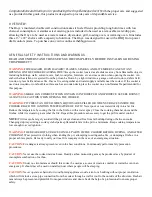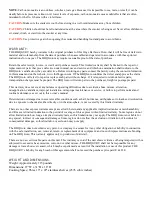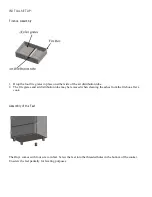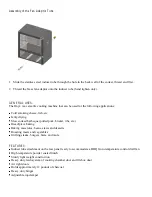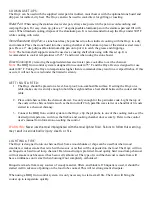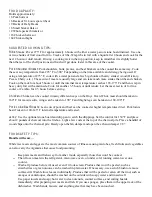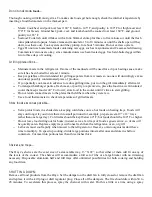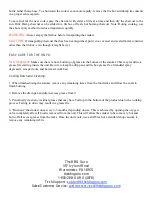
F O O D C A PA C I T Y :
Holds approximately:
• 6 Pork butts or
• 6 Racks of St. Louis spare ribs or
• 9 Racks of Baby Backs
• 6 Small brisket flats or
• 2 Whole packer briskets or
• 16 C
hicken halves or
• 64 Chicken thighs
SU G G EST E D C O O K I N G T IPS:
Rib
s
:
Smoke ribs at 275° F for approximately 6 hours with either a water pan or stone board indirect. Use one
or two chunks of fruit wood for 4 to 8 racks of ribs. Wrap ribs in foil with a liquid after 4 hours and cook for the
next 2 hours or until tender. If using a cooking rack in the top position, keep in mind that it is slightly hotter
than the rest of the shelf positions and food will get done faster in this area of the cooker.
Pork Should
e
r
/
B ri
s
k
e
t:
Pork shoulders, butts, picnics, and beef briskets can be cooked the same way. Cook
these at any temperature from 225° F to 300° F depending on the time available and strategy being used. If
using a temperature of 275° F, cook with a water pan and a few big chunks of hearty smoker wood (Hickory,
Pecan, Cherry, etc.). These cuts of meat are usually large and can take much more smoke than ribs and chicken.
Cook on the rack for about 5 hours or until the internal meat temperature reaches 165-175° F and then wrap in
heavy duty foil with a marinade. Cook for another 3-5 hours or until tender. Let the meat rest in its foil in a
cooler or Cambro for 2-3 hours before serving.
Chi
c
k
e
n:
Chicken can be
cooked in many different ways on the Onyx Oven. White meat should be taken to
160° F for moist results, wings can be taken to 190° F and thighs/legs can be taken to 180-190° F.
Pork Loin
s
/
B
ee
f Roa
s
t
s
:
Lean cuts of pork and beef can be cooked at higher temperatures direct. Pork loin is
best if taken to 140-145° F internal temperature and rested.
J
e
rky:
Use the optional stone board and drip pan to catch the drippings. Set the control for 150° F and place
about 2 pounds of charcoal into the firebox. Light a few coals at the top of the charcoal pile. Place a handful of
wood chips onto the charcoal pile. Barely open the fan damper and open the
exhaust damper 1/8”.
F O O D SA F E T Y T IPS:
Handle with care…
While raw meats and eggs are the most common sources of illness-causing microbes, fresh fruits and vegetables
can also carry the organisms that cause food poisoning.
Keep raw meats and fish away from other foods, especially those that won't be cooked.
Thaw frozen meats in the refrigerator, microwave oven, or under cold, running water-never on a
counter.
Wash all produce before it's used, even if it looks clean. Produce that won't be peeled, such as
strawberries or green onions, can be washed in plain water. If necessary, use a scrub brush to remove
surface dirt. Wash lettuce leaves individually. Produce that will be peeled or eaten off the rind, such as
oranges or cantaloupes, should be washed on the outside with soapy water and rinsed well.
Use paper towels and soapy hot water to clean utensils, counter surfaces, and cutting boards
immediately after preparing raw meats and fish. If you use sponges, place them in the upper rack of the
dishwasher. Wash hands, faucets, and anything else that may have been touched.


